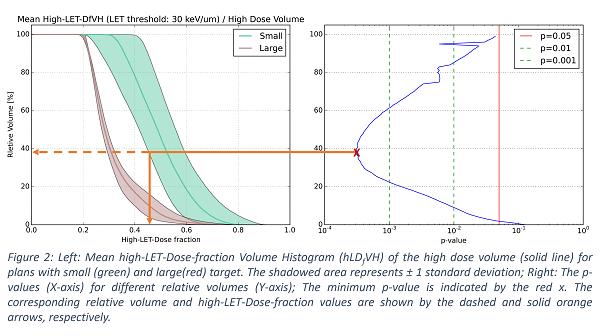Towards a novel treatment plan evaluation concept in carbon ion radiotherapy based on high-LET-dose
Ankita Nachankar,
Austria
PO-1964
Abstract
Towards a novel treatment plan evaluation concept in carbon ion radiotherapy based on high-LET-dose
Authors: Mansure Schafasand1,2, Andreas Franz Resch1, Erik Traneus3, Lars Glimelius3, Ankita Nachankar4, Markus Stock1,5, Antonio Carlino1, Joanna Gora1, Dietmar Georg2, Piero Fossati4,5
1MedAustron Ion Therapy Center, Medical Physics, Wiener Neustadt, Austria; 2Medical University of Vienna, Radiation Oncology, Vienna, Austria; 3RaySearch Laboratories, Physics, Stockholm, Sweden; 4MedAustron Ion Therapy Center, Radiation Oncology, Wiener Neustadt, Austria; 5Karl Landsteiner University of Health Sciences, Oncology, Krems an der Donau, Austria
Show Affiliations
Hide Affiliations
Purpose or Objective
The treatment of radioresistant tumors is a major indication for carbon ion beam radiotherapy (CIRT) due to the high ionization density, often quantified by the linear energy transfer (LET). Recently it was observed that the clinical outcome declined with increasing tumor volume; presumably caused by reduced high LET components in the mixed radiation field with increasing volume. The purpose of this study was to identify a single value predictor for mixed radiation fields in CIRT by investigating small and large volumes.
Material and Methods
Ten single-phase or sequential boost CIRT treatment plans for different tumor entities were selected. The total relative biological effectiveness (RBE)-weighted dose (computed with the local effect model I (LEMI)) was 73.6 Gy(RB|LEMI) or 76.8 Gy(RBE|LEMI) in 16 fractions.
The plans were grouped based on the volume of the low dose target (VlD). Targets with a VlD<500 cc were considered as small (n=5) and those with VlD≥500 cc as large. The evaluation was performed for the high dose volume (VhD; i.e. the volume that received the total dose). For the single-phase cases, no differentiation between low dose and high dose target was done.
For each plan, the high-LET-dose (hLD, which is the physical dose filtered based on LET) was scored over 18 different LET thresholds in a research version of the treatment planning system RayStation (RaySearch Laboratories, Sweden). For each plan a voxel-based evaluation of the fraction of hLD to physical dose (hLDf) was performed as a function of LET threshold to find an appropriate LET threshold for the whole study.
For the selected LET threshold, the hLDf volume histogram of each plan was extracted for its VhD and compared between the two cohorts by performing a t- or U-test (depending on the distribution of the data points).
Results
Figure 1 shows the hLDf frequency distribution of tumor voxels as a function of LET threshold for two plans (small and large) where a difference in distribution between the two cases can be observed. Averaging the second moment of these distributions over all plans indicated an optimal threshold of 30 keV/µm.

The most significant difference of tumor’s hLDf volume histogram was observed at a relative volume of 38% (V38%), corresponding to a mean hLDf of 0.52±0.07 and 0.31±0.01 in the small and large cohort, respectively (Figure 2).

It was thus assumed that for plans with a large target, a coverage of 38% of the tumor volume with a hLDf≥0.45 (which is the lower bound of hLDf in the small cohort) could be an indication for an enhanced hLDf-distribution (and closer to the distribution of small tumors, for which a better clinical outcome has been reported).
Conclusion
In this study the hLDf distribution in small and large tumors differed significantly. V38% was found as the most significant predictor among the investigated quantities at an LET threshold of 30 keV/µm, which may be used as an optimization objective in future high-LET-dose based optimization processes.